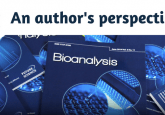Perspectives on the draft ICH M10 guidance: an interview with Boris Gorovits

Boris Gorovits is a Senior Director of the Bioanalytical lab at Pfizer. Boris earned his PhD in Enzymology from the Moscow State University and later completed postdoctoral research studies in protein biophysics at the Medical Center, University of Texas at San Antonio, TX, USA. In 2000, Boris joined Wyeth Research (later Pfizer Inc) to work as a bioanalytical group lead with a growing scope of responsibilities. Currently, he leads the Bioanalytical group within Biomedicine Design department which is responsible for many aspects of the Regulated and Nonregulated Bioanalytical support for the pan-Pfizer Biotherapeutic portfolio. Boris co-chairs Pfizer internal Immunogenicity Expert...





